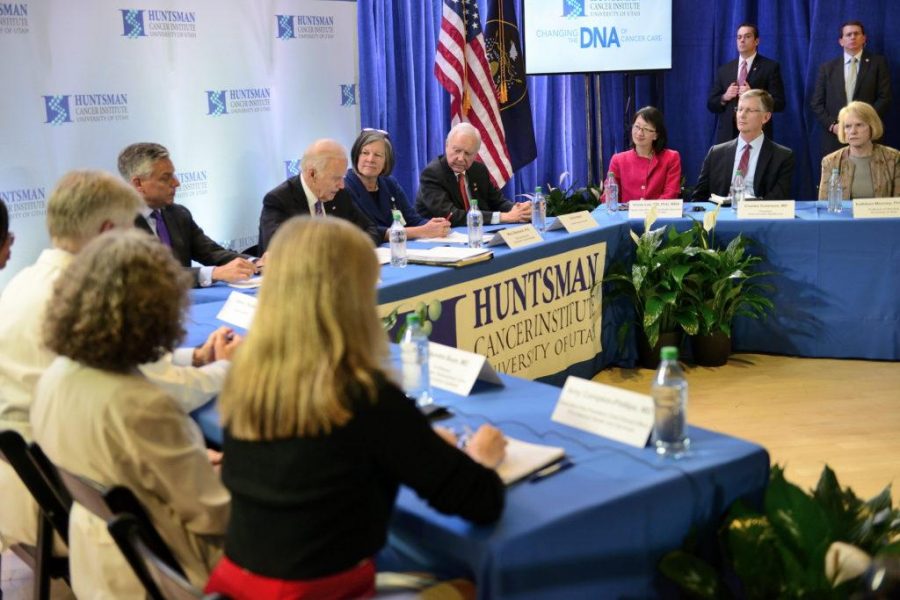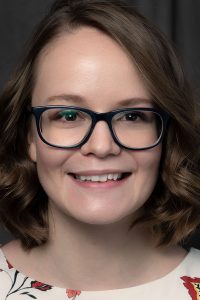A little over a month before Huntsman Cancer Institute (HCI) CEO and Director Mary Beckerle was dismissed by University of Utah President David Pershing and Senior Vice President of Health Science, Vivian Lee, a new memorandum of understanding for the operations of the institute was drafted. It was signed by Jon Huntsman, Sr. and his son Peter Huntsman in their capacities as Chairman and CEO of Huntsman Cancer Foundation, the charity that provides much of the funding to HCI.
It went unsigned by President Pershing, according to documents obtained by the Deseret News.
The memorandum says that there had been disagreements between the Huntsmans and the University regarding the funding, leadership, and future direction for the institute. “In particular,” they wrote, the Huntsman Cancer Foundation has both “a need to obtain assurances regarding the Institute’s autonomy and governance” and a need to clarify Huntsman Cancer Hospital’s “clinical operations and financial relationship with the Institute.”
The $250 million donation
Though Jon Huntsman, Sr. had told HCI staff and members of the media he had been preparing to make a $250 million donation when Beckerle was dismissed, the documents indicate the proposed donation wasn’t personal. Huntsman Cancer Foundation provides financial support to the institute by raising donations from private donors like local businesses and community members. The memorandum shows they committed to raise $120 million in new funding for the institute by the end of 2025, and reiterated a previous commitment to cover $130 million of Salt Lake County’s bonds to build the Huntsman Cancer Institute’s Primary Children’s & Families’ Cancer Research Center, which opens this summer.
According to Susan Sheehan, COO and President of Huntsman Cancer Foundation, that bond was secured three years ago by the foundation, and will be paid back to the county by them. The total amount will be about $173 million, including interest.
In the documents, Huntsman Cancer Foundation asks that the institute present an annual written report to the foundation. If approved, the foundation would provide an additional donation at a minimum of $10 million a year.
Donations from businesses and community members aren’t always disbursed to Huntsman Cancer Institute for research immediately. Sheehan says “Gift income is distributed to HCI in conjunction with its annual approved budget, and in accordance with any restrictions on gifts.” She explains, “HCI administration has instructed Huntsman Cancer Foundation that it is the institute’s preference to receive gifts on this giving cycle annually, so that distributions support” the institute’s annual budget, which is planned by the University of Utah. She says donations of less than $100,000 are distributed to HCI at least quarterly, and any donation more than $100,000 is distributed immediately.
The foundation sends those funds to the institute via checks that are deposited into restricted accounts. If a donation is given with a stipulation that it funds a certain type of research—breast cancer, for instance—that is communicated when the funds are deposited. They check back later to make sure the donations were used appropriately.
The $120 million of new funding would have been in addition to what the foundation would already have directed to the institute from private donations.
Cancer Hospital Revenues
Currently, one of the three main sources of funding for Huntsman Cancer Institute and its research comes from revenue generated by Huntsman Cancer Hospital. A percentage of those revenues are reinvested in the cancer hospital, with the remainder being split between HCI and the University’s health care system.
The memorandum proposed that, for the next three years, 25% of the revenues would be reinvested in the cancer hospital and the remaining 75% would go to Huntsman Cancer Institute—constituting about $48 million a year. This proposal would have reallocated 25% of the funds, which are currently going to University of Utah Health.
After those three years, according to the documents, 25% would go to the cancer hospital, 25% to University of Utah Health, and 50% to the institute.
The CEO’s authority
As for Huntsman Cancer Institute’s leadership, the Huntsmans wanted to see CEO Beckerle reporting to the President of the University rather than the head of the University’s hospital system, Vivian Lee. This change was later announced by President Pershing at the time of Beckerle’s reinstatement.
The memorandum also proposed that Beckerle would have had full authority over the cancer program at the University—not only the efforts to treat and research at Huntsman Cancer Institute, but also in the U’s health system. Additionally, it would have given her more authority to direct funding, and the power to recruit staff—even academic staff outside of the institute.
Though HCI has some operational autonomy, it is an entity of the U, so the direction of funding and hiring of staff are currently under the purview of the university and were likely overseen by Lee before her resignation.
Because Pershing didn’t sign it, the agreement never went into effect.
The aftermath
It’s clear the memorandum would have moved HCI in a direction the U wasn’t interested in. Vivian Lee, the CEO of University of Utah Health and the Dean of the Medical School, was invested in bringing all members of the U’s hospital system—the four hospitals, ten clinics, five university colleges, Moran Eye Center, and Huntsman Cancer Institute—closer together. She believed this would foster innovation and decrease costs, and it seems to have worked. Under her leadership, the University’s hospital system saw costs fall about 0.5% a year, while most university hospital systems nearby see them increase about 3% a year. They’ve used the extra money to help train medical students and provide medical care to those who wouldn’t otherwise be able to afford it.
One of Lee’s main goals was to use the proximity of the U to drive innovation in the hospital system—whether those advances were in medicine, technology, or other areas that could raise the quality of healthcare. While she served at the head of the system, it consistently ranked in the top 10 university hospitals for safety and quality. Just last year, it was ranked as first in the nation—beating prestigious systems like the Mayo Clinic. The U’s health care providers also have the highest patient satisfaction in the nation under her leadership.
The question is whether Huntsman Cancer Institute would benefit from closer integration into the system. Lee believed it would, but the researchers at the institute disagree. Several of them cite the institute’s operational autonomy as one of the reasons they chose to come to HCI over other, more prestigious cancer centers.
A few weeks after the memorandum of understanding was written proposed by the Huntsman family and Huntsman Cancer Foundation, Beckerle offered a new job to a current employee: Sunil Sharma. According to internet archives of his faculty profile, he previously worked as Chief of Medical Oncology and Senior Director of Clinical Research at Huntsman Cancer Institute. Now Sharma is the Deputy Director at Huntsman Cancer Institute, a position Beckerle created before offering it to him.
The spokesperson for Huntsman Cancer Institute says Beckerle had the authority to hire Sharma into the position, but it’s unclear if that’s true—researchers at the institute say they’re all hired and paid by the U.
Beckerle was dismissed a few weeks later, and the U announced they would move to integrate HCI more fully into the hospital system. Jon Huntsman, Sr. and Huntsman Cancer Institute employees called the move a “power grab.” Both the memorandum of understanding drafted by the Huntsman family and Beckerle’s hiring of Sharma may have affected those decisions.
Beckerle was reinstated as CEO and director of Huntsman Cancer Institute by Pershing a week after she was initially dismissed. Within a week, Lee resigned and Pershing announced he would step down at the end of 2017.
The future of HCI is uncertain, with searches underway to fill positions as the head of the health care system and the President of the University.
@EliseAbril



